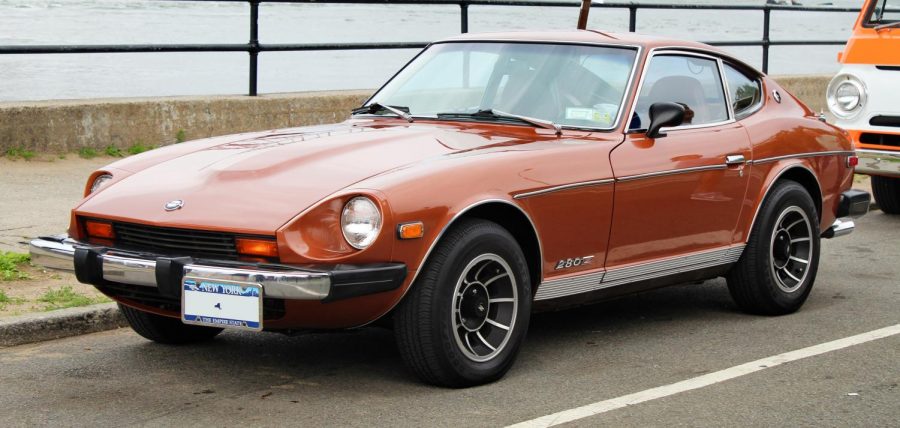The Nissan Z
January 16, 2021
The sixties were a simpler time. For a little over $3,000, you could get a 151hp 2.4 liter straight six pushing one of the most beautiful cars ever designed to 60 MPH in 7.8 seconds. The car I am talking about is the first Nissan Z, the 240. In 1931 Nissan created Datsun but declared that Datsun would only be cars exported by Nissan only 11 years before the release of the 240Z in 1958. Over the years, the Z has evolved into many things. From a wannabe American car to a wannabe german car, beach to its roots in Japan. So how did it go from fat rear tires and fighting muscle cars to massive wings and fake carbon fiber?
1969 was the year that it all began. The Fairlady Z, referred to as the 240Z in North America two years later, was the First Z car mass-produced by Nissan. With a power to weight ratio of about 1 to fourteen, the 240 was Japan’s attempt at competing with American muscle, and they succeeded. It did not take long for Americans to fall in love with the Datsun 240, and after just two years of production in Japan, they came to the states.
In August of 1978, Datsun released the 280Z. The 240Z younger but bigger brother came with sharper lines and a grill less front end. Along with a slight change in appearance, the 280Z came with luxuries like power windows and standard air conditioning. After the 280Z, the 280ZX, which was the luxury version of the previous line of sports cars. According to nissanusa.com, “Ten years after the initial Z-Car release, the Datsun 280ZX was introduced. Resembling its predecessors’ exteriors, the 1979 Z-Car sported a new chassis and a markedly luxurious interior.” The ZX also came with a T top option.
After winning the All Japan Rally Championships in 1983 Nissan Z cars no longer held the name Datsun. Nissan decided to discontinue its imports to America and began manufacturing cars there instead. The Nissan 300ZX still resembled the 240 and 280 but had square-like pop up headlights instead of the traditional ones used on the previous generations.
The fourth-generation 300ZX was put into production in July of 1989 and used to be produced until 1996, according to nissanusa.com. Unlike the previous model, the 300ZX ditched the pop up headlights and replaced them with headlights built into the car slanted more than 60 degrees.
After six years of no new Z cars being produced Nissan released the 350Z, and a lot had changed. The 350 had a rounded body style and sleek headlights to give the vehicle a modern look. The 350 was undeniably a sports car, and this was a huge change from Nissan’s history with rally racing and Z cars.
In 2009 Nissan released the newest Z model, the 370Z. With more power, better handling, and a more modern style, the 370 is a fan favorite from Nissan. Twelve years later and the 370 is still one of Nissan’s best-selling vehicles, and its long history is one of the biggest factors that draw people to these cars.
Z cars have always played a large role in the tuner community. These cars are fast, affordable, and easy to modify. In both Japan and America, people love these cars and the history that comes with them. Would you ever own a Z?





















































































































































